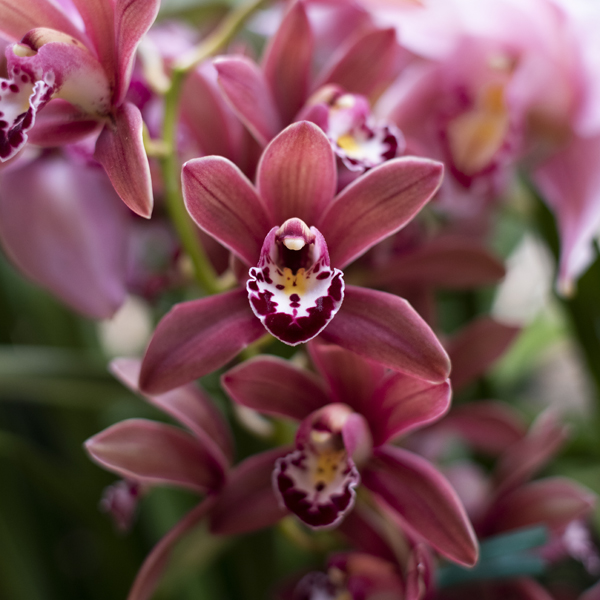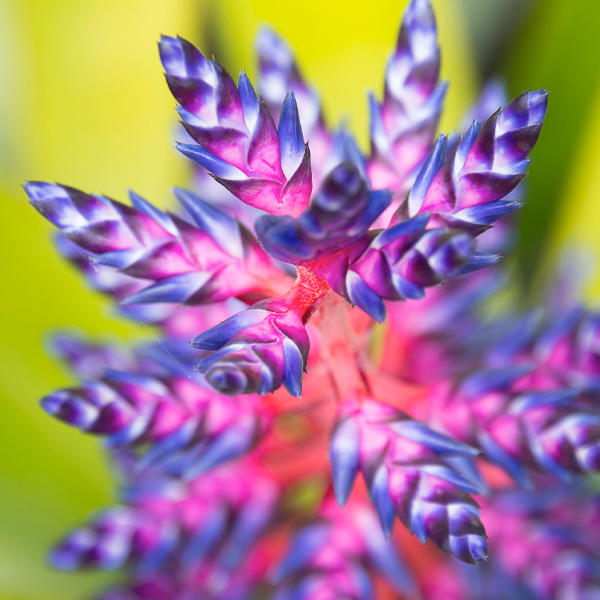

A Walk Through the Greenhouses
Green Fix on a Winter Day
Where do gardeners go to satisfy their plant cravings when the weather outside is less than perfect? Within minutes, a walk through the Garden’s Greenhouses can transport anyone needing a “green fix” to a semitropical, tropical, or desert environment, filled with specialty plants that flourish in these three different climes. For more than 40 years, the Greenhouses have displayed beautiful and fragrant flowering plants, rare plants, edible plants, utilitarian plants, seasonal plants, and houseplants from around the world.
All Life Depends on Plants
These three glass houses provide yet another opportunity to witness the irreplaceable role plants play. All life does depend on plants. They are, indeed, responsible for the air we breathe, the clothes we wear, the shelter we require, and the purity of our water. Plants are the source of medicines both known and still undiscovered.
The Greenhouses serve as living laboratories where, over the years, tiny seedlings grow to the ceiling, ancient plants bloom, and cacti spawn families. When the weather outside is not delightful, come inside and refresh yourself as you discover another benefit of these hundreds of unusual plants—their healing and spiritual properties.
The Semitropical Greenhouse
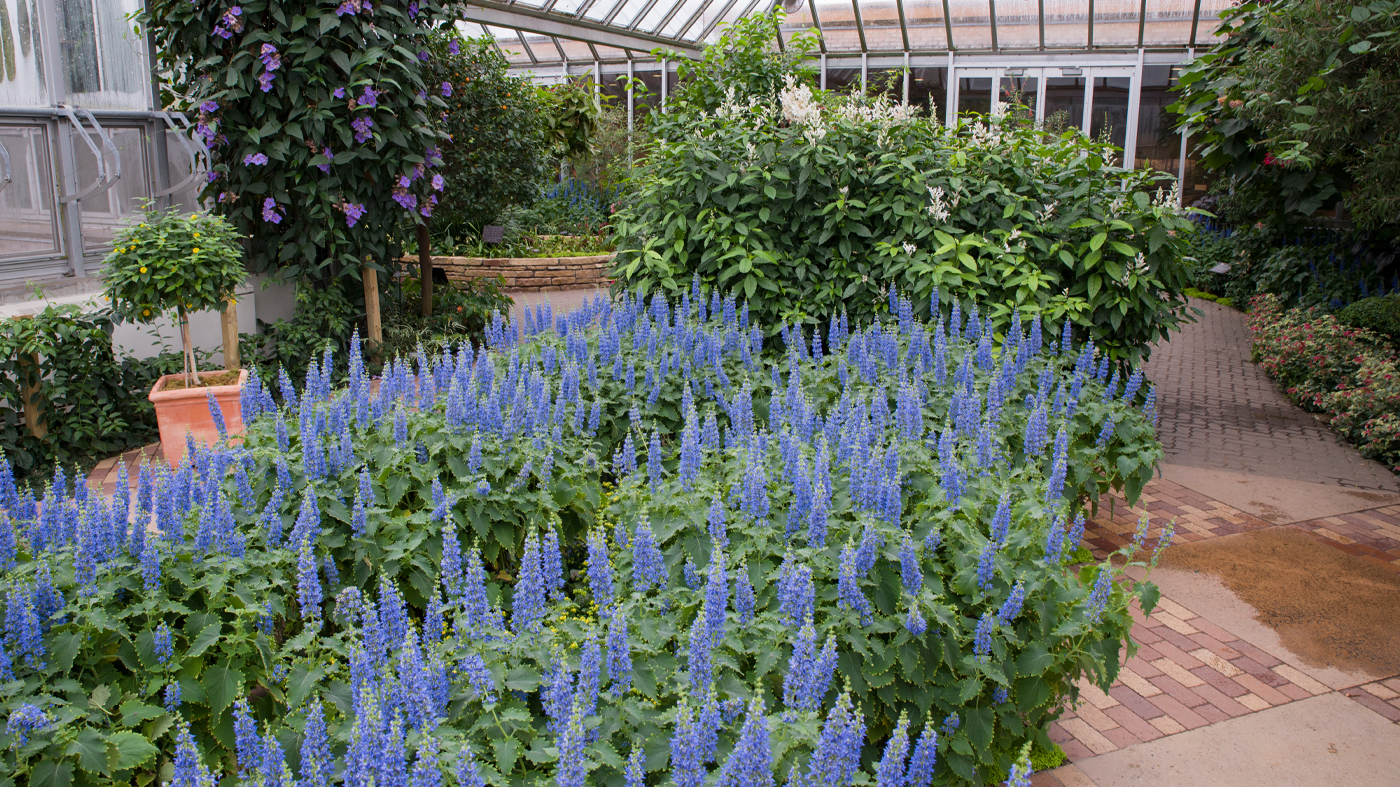
In the Semitropical Greenhouse, where temperatures hover between 75 and 85 degrees Fahrenheit during the day, and the humidity is close to 30 percent, visitors will find plants from all over the globe, many of which gardeners will recognize as familiar midwestern houseplants. A variety of ferns, gardenia, and jasmine are but a few in this category, most blooming brightly with orange, blue, pink, lavender, and scarlet flowers in winter. Masses of bougainvillea crowd the windows as they climb closer to the sun.
The Weather
The Greenhouses know no season. Twelve months of the year, sunlight, heat, wind, and humidity are controlled by fans, whitewash on windowpanes, and tightly regulated thermostats, where a ten-degree drop in temperature at night is essential. Home gardeners can pick up useful tips on how to grow these familiar plants at home—even without a greenhouse.
The Tropical Greenhouse
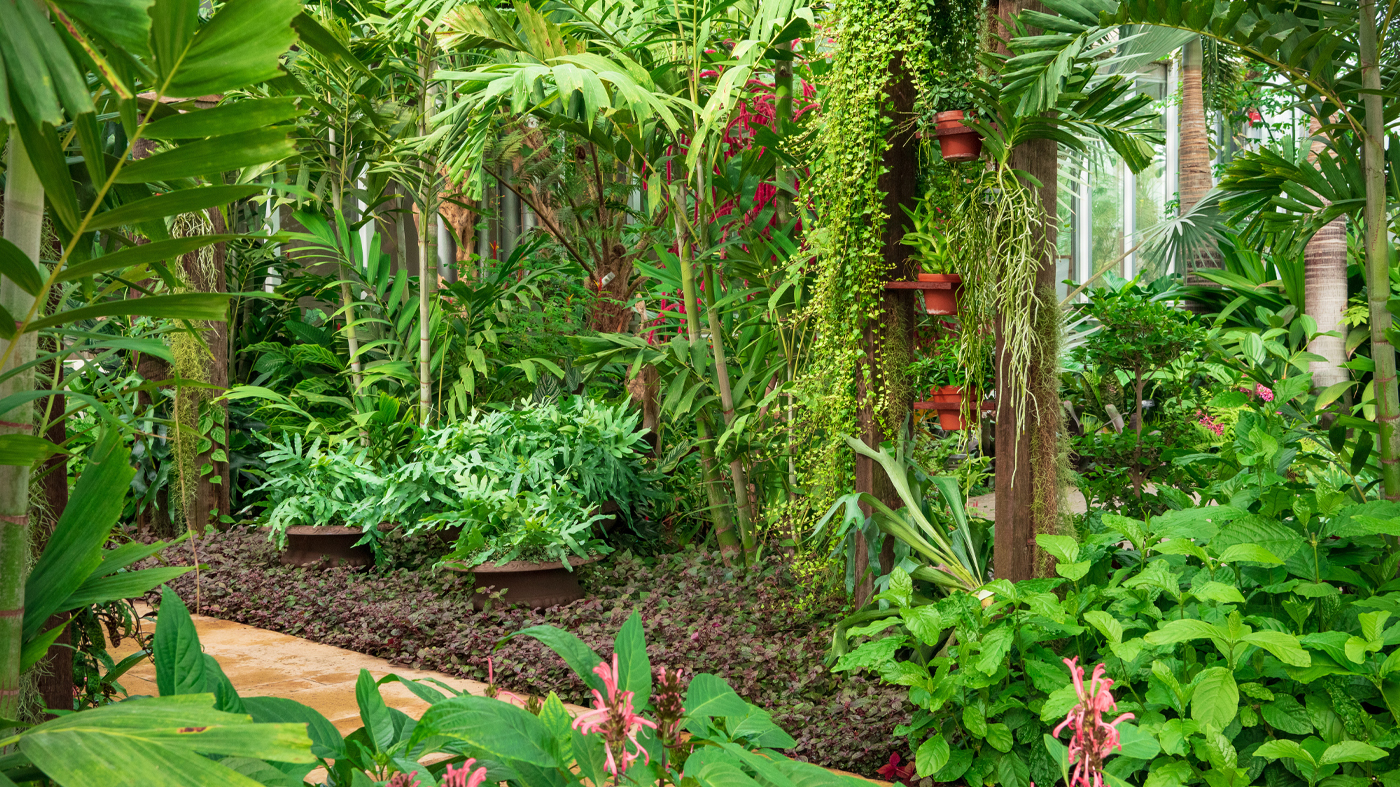
It's warmer in the tropics, and the Tropical Greenhouse pushes the heat level up by 10 degrees (but again, down at night), and the moisture in the air is now at 90 percent—a perfect combination for these water- and warmth-loving plants from Asia, Australia, and the Caribbean. The shapes and sizes of the plants’ leaves are astounding, as many plants develop ingenious methods to out-compete their densely planted neighbors for precious rainfall and sunlight. Many of them reach higher and higher for the sun, while others grow low, content to make do with filtered light. A chocolate tree grows pods of cocoa seeds, and three man-made trees hold a variety of winter-blooming orchids.
Adaptation
If there is one word to think about as you admire the hundreds of completely diverse greenhouse plants, that word is adaptation. How do plants adapt to their surroundings? Compare the enormous 7-foot banana leaves with the palm tree’s delicate, arching foliage. Banana plants produce bunches of fruit (a process requiring a huge expense of energy), and those oversized leaves need to manufacture the starches and energy so the plant can “make fruit.” School groups find the banana plant fascinating, not only due to the popular fruit, but also because the maroon flowers are truly unlike any other.
The Arid Greenhouse
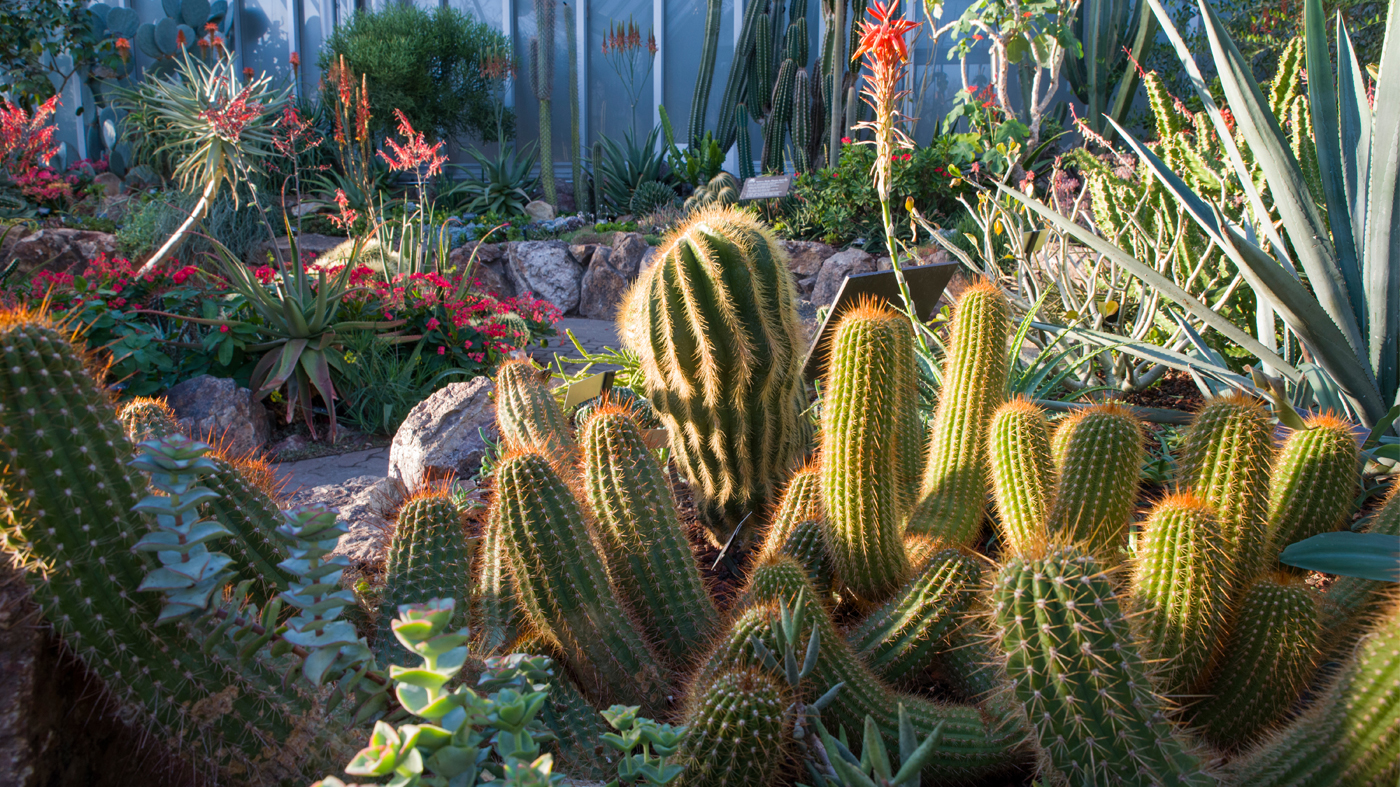
The Arid Greenhouse is more than a display of cacti, succulents, and some very strange-looking plants. It is a living laboratory demonstrating how plants naturally adapt to little water and very harsh conditions. Yes, the desert is hot during the day, but temperatures can drop by 40 degrees at night! The brilliant flashes of floral color and every shade of green seen in the other Greenhouses now give way to blues, grays, silvers, and perhaps a touch of soft yellow. In this environment, hot daytime sun is plentiful (80 to 90 degrees), nights are cold, soil is rocky, and water is the most precious commodity. How do plants succeed in attracting, storing, and parceling out this water?
Adaptation—again
Take a look at the fat cactus pods, the spines of the agave, the slow and low plant growth, the waxy coating on plant leaves—they are all there to help the plants conserve water. Look at the unusual shapes of leaves—spiral, corkscrew, pencil, snakelike. They have adapted to this tough environment, since their future depends on conserving natural resources, not wasting them.
Where Do Cut Flowers Come From?
The tropics are home to some of the most gorgeous flowers prized by floral designers and they’re growing here, too. Brilliant red and yellow Heliconia from Central America and the deep red torches of flowering ginger are now seen as whole plants, not just cut flowers. Dozens of orchids are shown as they grow in the wild—often nestled in the protected shallows of tree branches, where their specialized roots absorb water and nutrients from the air or the host plant—harming neither in the process. An allée of slow-growing spindle palms anchors this Greenhouse. The Greenhouse is decked out further with ornamental hanging balls made of orchids, and triangular trees fashioned from succulent bromeliads.
